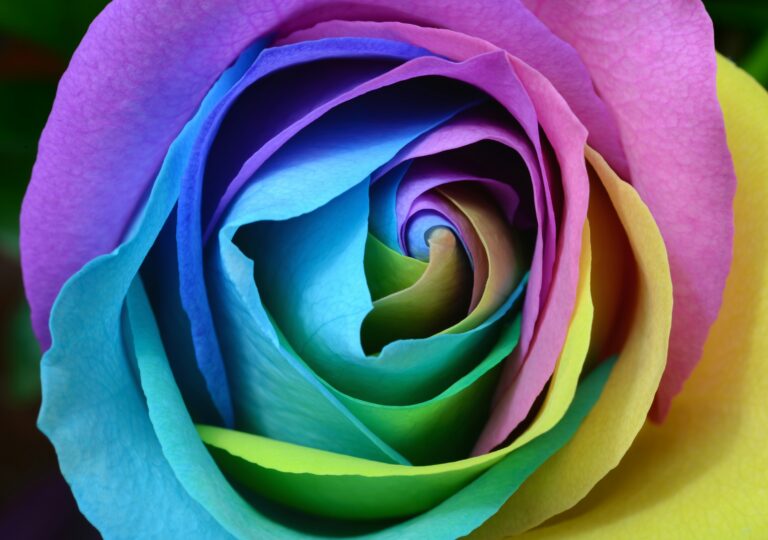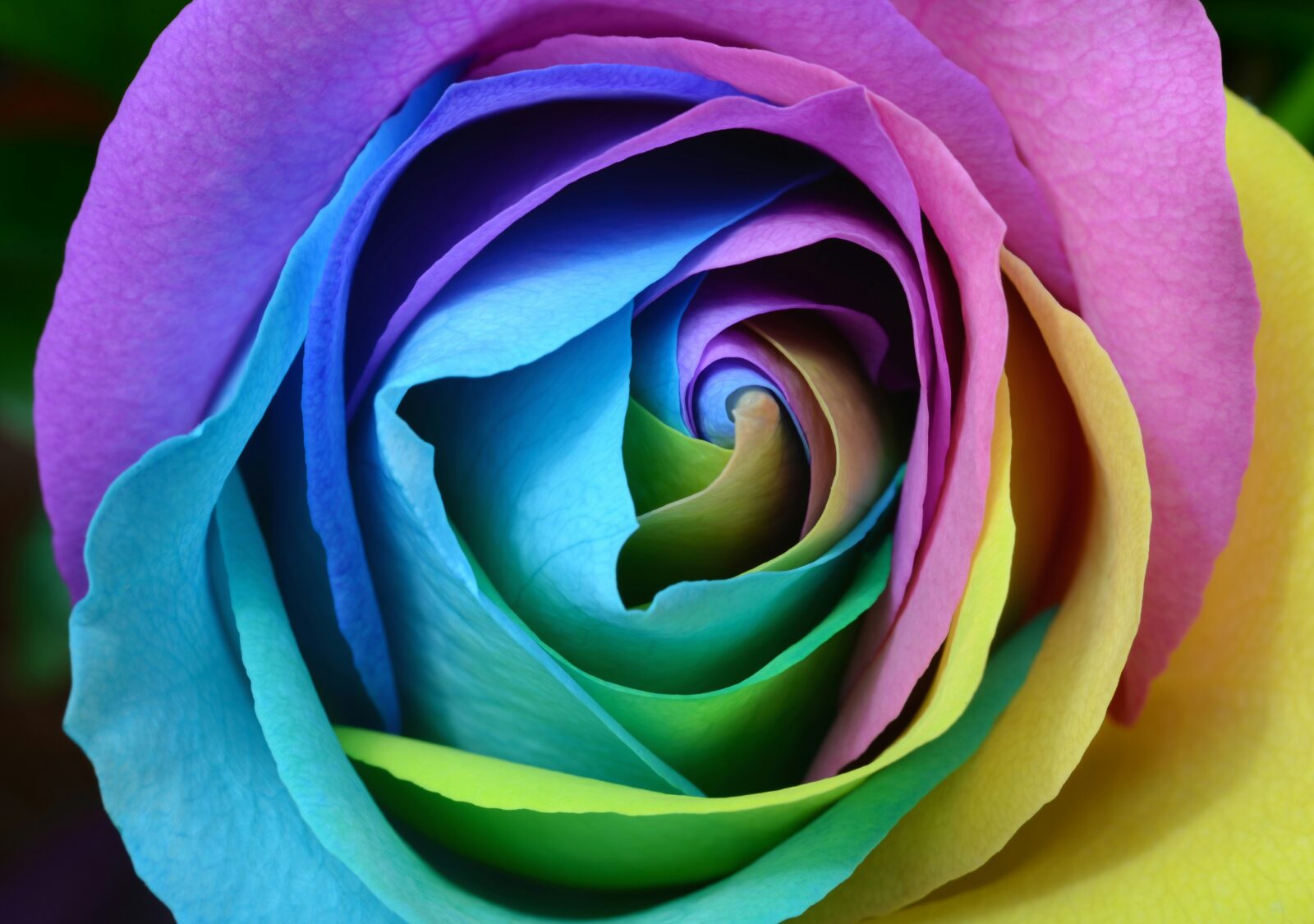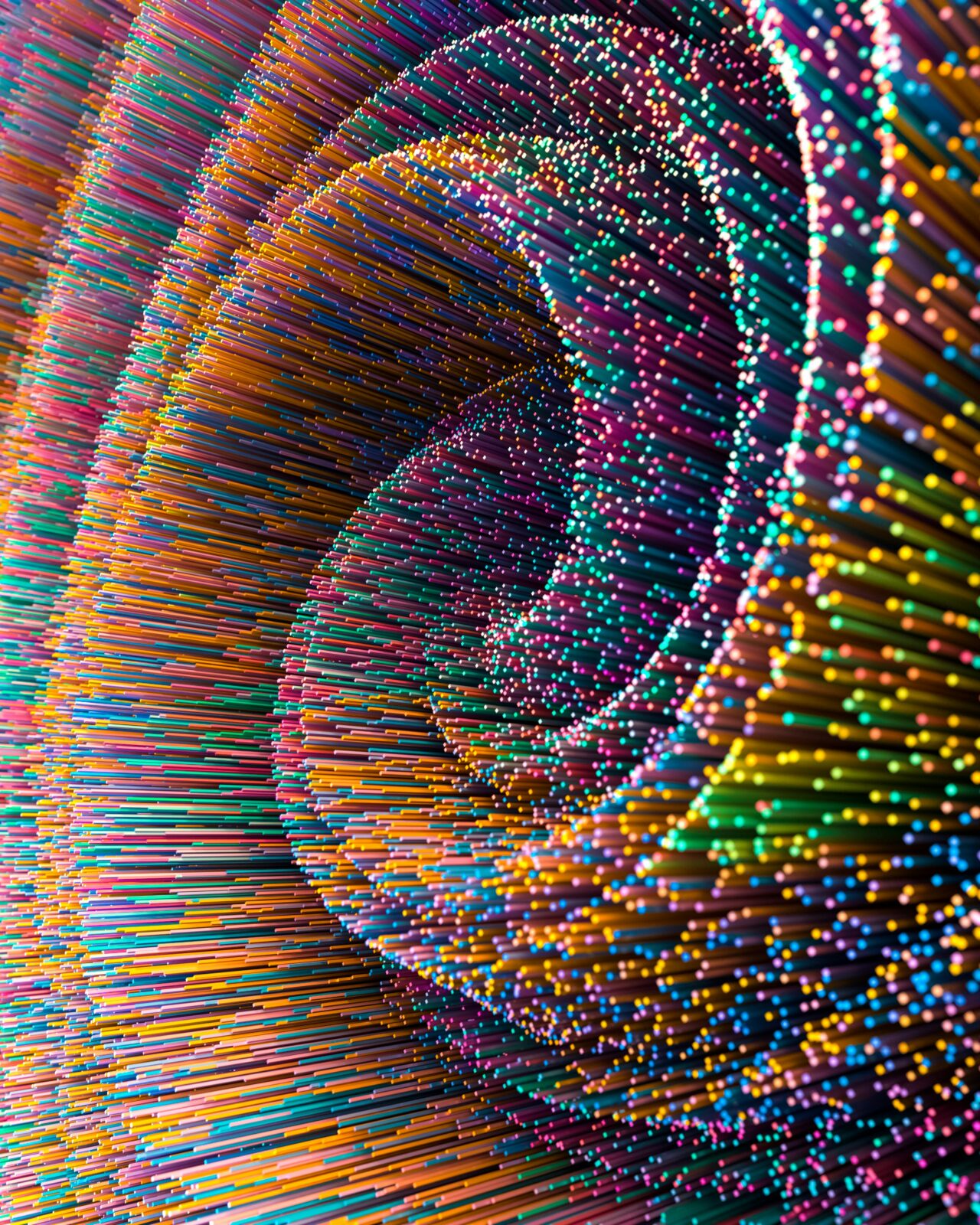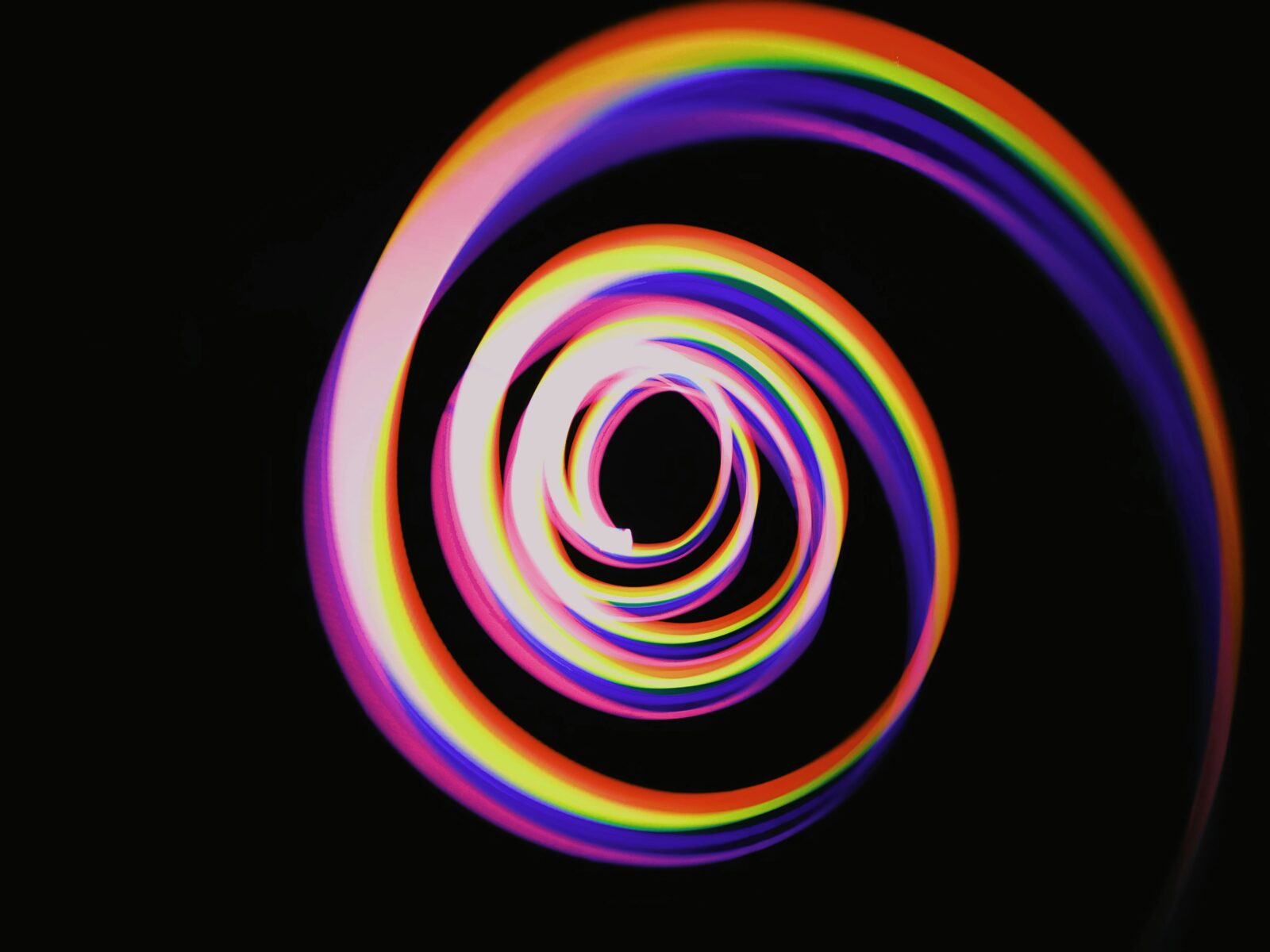
The Postconventional Stages of the Arts: Spiral Dynamics Yellow & Turquoise
The following is the third of three posts that will comprise a complete Spiral Dynamics analysis of the arts. If you’re not familiar with this model of developmental psychology, please check out my overview here. Here’s the first and second posts in this series.
My analysis will cover the Spiral Dynamics stages Purple through Turquoise. This post features the postconventional stages Yellow and Turquoise.
Analysis of each stage will feature:
- The basics of each stage, including an overview of its worldview and sphere of concern, core values, motto, and percentage of world population at this stage
- The role of the arts in a society at that stage
- That stage’s approach to the arts
- How the stage views mistakes and success
- A list of examples of art forms at that stage
Yellow—“Integral”
Visionary, systems thinking, synergy. Motto: “I actualize myself while taking others into account.”
Basics of Yellow. Yellow is all about systems-thinking, seeing the “bigger picture,” and self-actualization. Yellow’s worldview is that the world is a complex, self-organizing system and that humanity’s role is to create integral solutions for our collective problems. Morally, Yellow is individualistic, and its circle of concern extends to the entire earth. It can see how its own point of view builds on those of the past and how the consequences of its actions extend deep into the future. Yellow is at its best in its creative innovation, visionary outlook, ability to set aside egoic concerns, ability to resolve paradoxes and polarities, non-judgementality, nuance, ability to discern what is relevant or irrelevant, and access to universal consciousness. Yellow is at its worst in its overemphasis on complicated intellectual systems and maps, perceived aloofness, and tendency to get lost in its compelling daydreams. Yellow first developed about fifty years ago and currently comprises about one to five percent of the world’s population.
The role of the arts in Yellow societies. Yellow societies view the arts as an emergent property of a society that are both a cause and effect of that society’s evolution into greater levels of complexity and consciousness. In this view, artists are agents of individual and collective self-actualization, playing many vital integrating functions such as bringing people together and tapping into the self-healing power of the body. Yellow artists are the first to fully integrate what had previously seemed separate: head and heart, body and mind, and the personal and the collective.
The Yellow approach to the arts. In contemporary arts contexts, Yellow views the creative act as an act of the devotion to beauty that is an expression of the whole artist (body, mind, soul, and spirit), the full integration of emotion and technique, the ability to continuously sense and monitor the body during the creative act, the ability to include and adjust to the energy of the audience in real-time, the creation of purpose-driven projects, the use of multiple forms of technology to create an engrossing experience, valuing knowledge and competency over status or rank, the disappearance of fear due to growing beyond approval-seeking, the idea of practicing and creating as acts of self-actualization, an approach to teaching that takes account of the students’ developmental stage, the pursuit of learning for its own sake, an attitude of flexibility, spontaneity, and functionality, the creation of new models and systems to help students better understand, practice, and grow, the balance of well-being and excellence, the ability to resolve paradoxes (e.g., how to instill internal motivation in students without forcing them to practice), open-mindedness, clarity, constructive criticism, and the ability to make choices based on a larger context or transcendent vision.
Mistakes and success according to Yellow. Yellow no longer views mistakes as problems to be avoided, but as genuine learning opportunities. Albert Einstein’s quote, “A person who never makes mistakes has never tried anything new,” is highly characteristic of Yellow’s open acceptance of mistakes as a part of a life-long learning process, as is the common jazz musician’s advice to “make it sound like you meant to do it.” For Yellow, success belongs to the most competent, who are rewarded for taking the right approach or process, and not necessarily for getting the right answers. Yellow’s primary emotions around mistakes are frustration and curiosity.
Examples of Yellow art forms. Yellow is still fairly new, so there aren’t many examples in the arts, but here are a few: The use of the Alexander Technique in the arts, the use of the arts for eliciting certain states of mind, El Sistema, The Society for Artistic Research in Weimar, David Lynch’s film pedagogy, Free Play by Stephen Nakmanovitch, Goedel, Escher, Bach by Douglas Hofstader, the ability to draw on many styles for use at appropriate moments, the full integration of internet-age technology into the creative process, Star Trek (each race is based on a different Spiral Dynamics level), Gandalf the Grey from The Lord of the Rings, and the Soulforce Arts Approach.
Turquoise—“Wholeview”
Holistic, wholeview, cosmic consciousness. Motto: “I benefit existential reality by both actualizing and transcending my egoic self.”
Basics of Turquoise. Turquoise is all about the interbeing of self and cosmos, reverence for all of life, transpersonal perspectives, and experiencing the wholeness of existence through mind and spirit. Its worldview is that the world is a single intricately balanced organism that is now in jeopardy in humanity’s hands. Morally, Turquoise is collectivist, and its circle of concern extends to the entire universe. It is primarily concerned with participation in the harmony of all things through all time. Historically, Turquoise can be seen at the core of many of the great wisdom traditions and in the teachings of certain luminaries and sages, but as a matter of a more widespread phenomenon, it is emerging only now. Turquoise is at its best in its focus on searching for pragmatic planetary solutions that serve all life on earth, its relentless compassion, its ability to see the world and cosmos as one, and its effortlessness. Turquoise is at its worst in its other-worldly qualities, when it gets stuck in spiritual consciousness, and when it is unable to become grounded in practical, day-to-day realities. It currently comprises one hundredth of one percent of the world’s population.
The role of the arts in Turquoise societies. Turquoise societies are extremely rare, but those that exist view the arts as manifestations of spirit and vehicles for mystical union with all there is. Artists act as agents of healing and harmony by participating in the flow of life force energy that runs through them. Turquoise artists serve a greater cause, are energetically attuned to all life, are community-oriented, and can, as William Blake put it, “hold infinity in the palm of your hand and eternity in an hour, to see the world in a grain of sand, and the heavens in a wildflower.”
The Turquoise approach to the arts. In contemporary arts contexts, Turquoise shows up as the view that the creative act is a meditation, contemplation, or prayer (e.g. “praying music” more than “playing music”), the use of art to elevate the consciousness of all humanity, the transmission of the artists’ state of consciousness to the audience, a focus on the transcendent and the sublime, flow states and other altered states of consciousness, complete effortlessness, being a vessel for your art, the view that art facilitates the evolution of the self, the integration of instinctive, cognitive, emotional, energetic, and spiritual modes of learning, technical and expressive skill that verges on the miraculous, the integration of scientific and spiritual approaches, the “freedom on the other side of complexity,” the view of teaching as a process of guiding students into humanity’s deepest wisdom, the ability to call on the full potential of the healing power of the arts, the ability to integrate and use information from any source, the ability to bring the past alive and show students or audiences their place in the grand scheme of things, a child-like playfulness, an attitude of spontaneity, humility, and a light-heartedness that comes from deeply seeing the natural flow of things.
Mistakes and success according to Turquoise. To Turquoise, the framing of “mistakes vs. success” seems simplistic and naive. That being said, Turquoise can clearly and penetratingly see what works, what doesn’t work, and why, and has compassion for the pain of not reaching one’s goals. Turquoise views mistakes as creative gifts from the universe, no longer assigning praise or blame to the separate self. Turquoise also can “jiu-jitsu” any problems or challenges that come along, turning what at first seemed like a mistake into a success. Turquoise experiences feedback from the “outer” world as reflections of the “inner” world: when seeing that things aren’t going as desired, Turquoise will ask, “What is it in me that doesn’t want to reach this goal?” Success for Turquoise goes beyond seeking the benefit of any one individual or society, beyond any polarized worldview, and happens when individual or collective action is aligned with the enrichment of life itself. The primary emotions related to mistakes are curiosity, compassion, and the joy of discovery.
Examples of Turquoise art forms. Many of the most transcendent works of art, even those created hundreds or even thousands of years ago, exhibit Turquoise characteristics. Examples include Chartres Cathedral, the Temple of Luxor, the Taj Mahal, Bach’s Mass in C minor, the late Beethoven string quartets, Ravi Shankar, John Coltrane’s album A Love Supreme, devotional art and music aimed at industrial-grade spiritual practice (as opposed to faddish, New-Agey pseudo-practices), Music and the Soul by Kurt Leland, The Mysticism of Sound and Music by Hazrat Inayat Khan, Alex Grey’s paintings and his book The Mission of Art, Cory Ench’s digital art, the film Koyaanisqatsi, M.C. Escher, Buckminster Fuller, the great wisdom tradition texts that blend spirituality and art such as the Tao Te Ching, the Bhagavad Gita, and the poetry of Jalaluddin Rumi, as well as the Soulforce Arts Approach.
The Simplicity on the Other Side of Complexity
“For the simplicity on this side of complexity, I wouldn’t give you a fig. But for the simplicity on the other side of complexity, for that I would give you anything I have.”
— Oliver Wendell Holmes, in a letter to Sir Frederick Pollock
The promise of Spiral Dynamics is that of a tangible means of meeting your artistic purpose and addressing your challenges from a new, higher-order stage of consciousness, one which can bring many benefits to your art and life. When you become intentional about growing your consciousness up the Spiral, you may find that many of your most perplexing artistic or personal challenges suddenly feel trivially easy. When yet other challenges inevitably arise, you may experience a newfound sense of equanimity and confidence. In addition, the growth of your consciousness may help you discover creative avenues that may have been previously hidden from view.
With sufficient personal growth, you will be able to enjoy the surest sign of true mastery: “the simplicity on the other side of complexity.” Practicing your musical instrument will no longer feel like a mechanical task of inculcating the right procedures, but will become a holistic and embodied process of self-discovery, healing, and growth. Acting in a play will no longer feel like an effort to prove your self-worth through a perfect performance, but will become an act of devotion to beauty which transmits your own quality of consciousness—your System Update—to your audiences. Similarly, teaching your art will no longer feel like an effort to get your students to do what you want, but will become a process of helping your students grow their own consciousness so they can eventually participate in the leading edge of human development that will be emerging in their own time.
When you approach your artistic life in this way, you will be fulfilling one of the highest potentials of the arts: to act as a catalyst for growth, healing, connection, wisdom, and love. After all, this is what the greatest artists and their works of art have offered humanity throughout the ages.
You can play your part in this potential by growing up the spiral as fully and quickly as possible so that your art carries a System Update that will act to beckon people up the spiral. Art made in this way has the potential to be of tremendous benefit to your audiences and the world around you: it catalyzes your audience members’ own growth up the spiral into the holistic values now necessary to create a more beautiful, harmonious world.
____
Stay tuned for more blog posts and videos about discovering your creative purpose, creating more freely, and making art that matters!
For more support in this process, download your copy of the Soulforce Arts Starter Kit, a free mini-course designed to help you reconnect with your Soulforce, the transformative energy essential to art that matters. You can access the Starter Kit by signing up for the Soulforce Arts Institute’s email newsletter.
You can also join the Soulforce Arts Community, an online community and learning platform that brings together conscious artists of all kinds and abilities to help you discover a deeper artistic purpose, create free from blockages, and make a better world.
The above post is adapted from Chapter 9 “Spiral Dynamics & the Arts” of my book, “Soulforce: How to Discover Your Artistic Purpose, Create More Freely, & Make Art That Matters,” now available for pre-order.
Joseph Arnold
Violinist, Alexander Technique teacher, and Director of the Soulforce Arts Institute
SoulforceArts.com
SoulforceArts.com/Community
Image credit: Laura Ockel unsplash.com





